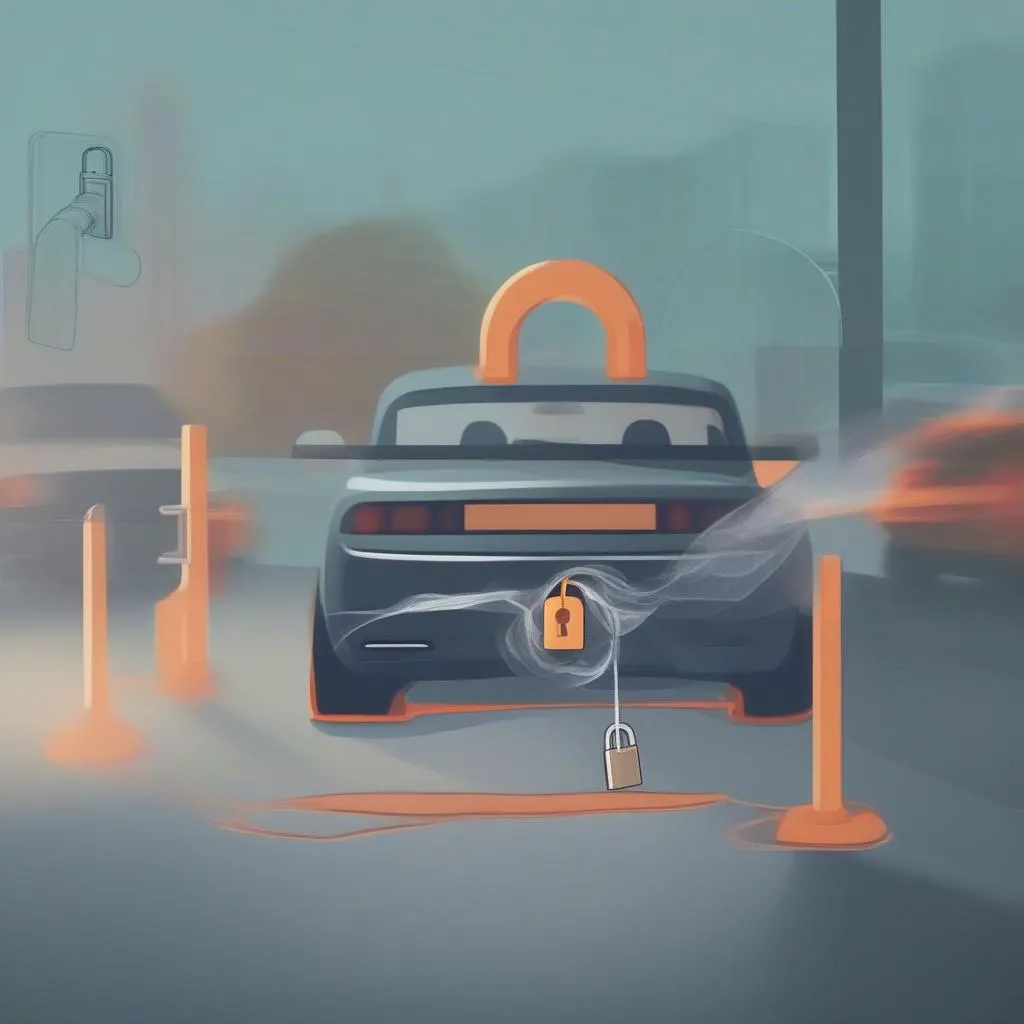The EPC warning light, short for Electronic Power Control, appearing on your Seat Toledo’s dashboard can be a cause for concern. This light is part of your car’s engine management system and signals a malfunction within the system. Ignoring it could lead to reduced engine performance, increased emissions, or even potential engine damage. This comprehensive guide will walk you through the common causes of the EPC warning light on a Seat Toledo and provide you with potential solutions and troubleshooting steps.
Understanding the EPC System
The EPC system in your Seat Toledo is responsible for managing several critical engine functions, including:
- Throttle control: The EPC system controls the amount of air entering the engine, directly impacting acceleration.
- Fuel injection: It manages the timing and amount of fuel injected into the engine for combustion.
- Ignition timing: The system regulates the timing of the spark plugs to ignite the air-fuel mixture.
- Emissions control: The EPC system plays a role in regulating emissions by controlling the air-fuel ratio and other related components.
When the EPC system detects a problem, it triggers the warning light on your dashboard.
Common Causes of the EPC Warning Light on a Seat Toledo
A variety of issues can trigger the EPC light in your Seat Toledo. These range from minor sensor faults to more serious problems with the throttle body or engine control unit.
- Faulty Throttle Position Sensor (TPS): The TPS relays information to the EPC about the position of the accelerator pedal, influencing fuel injection and ignition timing. A malfunctioning TPS can disrupt these processes.
- Malfunctioning Mass Air Flow (MAF) Sensor: The MAF sensor measures the amount of air entering the engine. Incorrect readings from a faulty MAF sensor can lead to an imbalanced air-fuel mixture, triggering the EPC light.
- Issues with the Throttle Body: The throttle body is responsible for controlling the amount of air entering the engine. A dirty or faulty throttle body can disrupt airflow and activate the EPC light.
- Faulty Brake Light Switch: While seemingly unrelated, a faulty brake light switch can sometimes interfere with the EPC system, triggering the warning light.
- Problems with Spark Plugs or Ignition Coils: Worn-out spark plugs or faulty ignition coils can lead to misfires, which can trigger the EPC light.
- Vacuum Leaks: Leaks in the engine’s vacuum system can disrupt airflow measurements and potentially trigger the EPC light.
- ECU Issues: While less common, problems with the Engine Control Unit (ECU) itself, such as software glitches or electrical faults, can also lead to an illuminated EPC light.
 Seat Toledo Engine Bay with Highlighted Components
Seat Toledo Engine Bay with Highlighted Components
Troubleshooting the EPC Warning Light
If the EPC light comes on in your Seat Toledo, it’s crucial not to ignore it.
1. Check Your Brake Lights: As a simple first step, ensure your brake lights are working correctly. A faulty brake light switch is a relatively easy fix and could be the culprit.
2. Inspect for Obvious Issues: Visually inspect the engine bay for any disconnected hoses, loose wiring, or damaged components, particularly around the throttle body and air intake.
3. Read the Fault Codes: The most effective way to diagnose the EPC light is to read the Diagnostic Trouble Codes (DTCs) stored in your car’s ECU. This requires an OBD-II scanner, a device readily available at auto parts stores or online.
- Connect the OBD-II scanner to the diagnostic port located under the dashboard on the driver’s side.
- Turn the ignition to the “on” position without starting the engine.
- Use the scanner to retrieve the fault codes.
4. Consult a Professional: If you’re uncomfortable working on your vehicle or if the fault codes indicate a more complex issue, it’s best to consult a qualified mechanic specializing in Seat vehicles.
Remote Diagnostics and Programming for EPC Issues
In some cases, addressing the EPC warning light might involve software updates or remote diagnostics.
“Modern vehicles, including the Seat Toledo, often require specialized software and equipment for diagnostics and repairs,” says automotive electronics expert John Miller. “Remote diagnostics allow technicians to access the vehicle’s computer systems from anywhere, enabling them to identify software-related issues and potentially perform software updates remotely, saving time and often reducing repair costs.”
 Technician Performing Remote Diagnostics on a Seat Toledo
Technician Performing Remote Diagnostics on a Seat Toledo
However, it’s essential to choose a reputable and qualified service provider with experience in remote diagnostics and programming for Seat vehicles.
Conclusion
The EPC warning light in your Seat Toledo should not be ignored. While it might signal a minor issue, it could also indicate a more serious problem requiring professional attention. By understanding the potential causes, taking the initial troubleshooting steps, and seeking expert help when needed, you can ensure your Seat Toledo continues to run smoothly and reliably.


